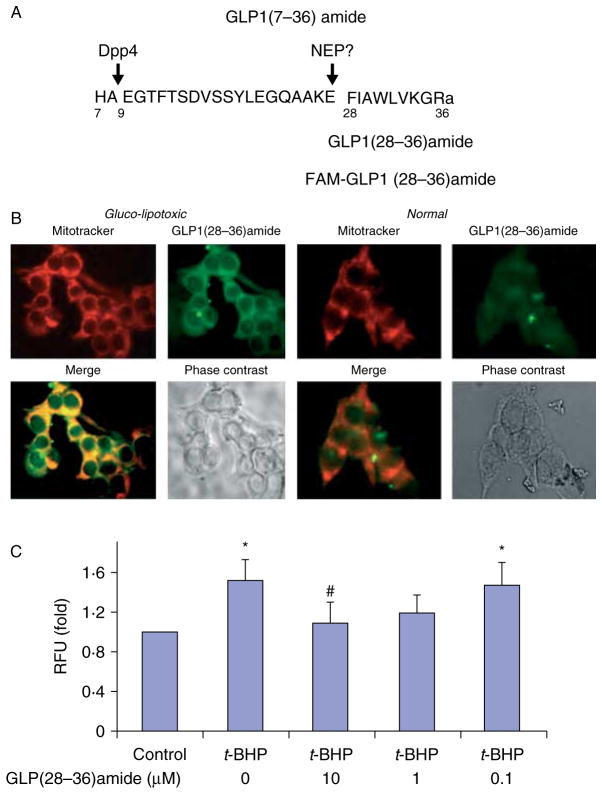Figure 2.
GLP1-derived nonapeptide selectively enters glucolipotoxic INS-1 β-cells, targets mitochondria, and protects against oxidative stress-induced loss of mitochondrial membrane potential. (A) Sequence of the insulinotropic form of GLP1, GLP1(7–36)amide, and the C-terminal nonapeptide, GLP1(28–36)amide, derived from it. The peptide was labeled at the amino-terminus with the fluorescent compound 5- FAM. (B) Intracellular transport of fluorescence FAM-labeled GLP1(28–36)amide into glucolipotoxic (left panel), but not normal (right panel), INS-1 cells. Cells were cultured in the presence of 25 mM glucose and 0.3 mM oleate for 72 h. FAM-labeled nonapeptide and MitoTracker were added to the cells for 18 h. (C) GLP1(28–36)amide inhibits t-BHP-induced loss of mitochondrial membrane potential in INS-1 cells. Mitochondrial membrane potential was evaluated using the JC-1 Mitochondrial Membrane Potential Assay. Treatment of INS-1 cells with 18.25 μM t-BHP for 48 h resulted in a loss of mitochondrial potential, as indicated by an increase in green fluorescence intensity of monomeric JC-1, and this was inhibited by concurrent treatment with 10 or 1.0 μM GLP1(28–36)amide. For mitochondrial membrane potential studies, cells were treated with 18.25 μM t-BHP for 48 h. *P<0.05, t-BHP vs control; #P<0.05. t-BHP control vs t-BHP plus GLP1(28–36)amide.

